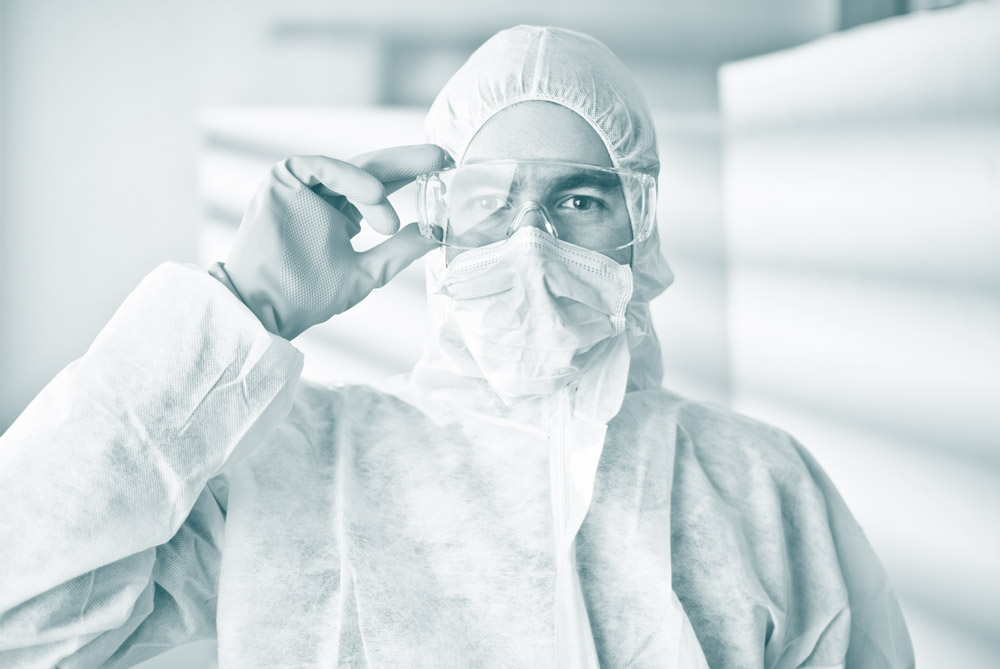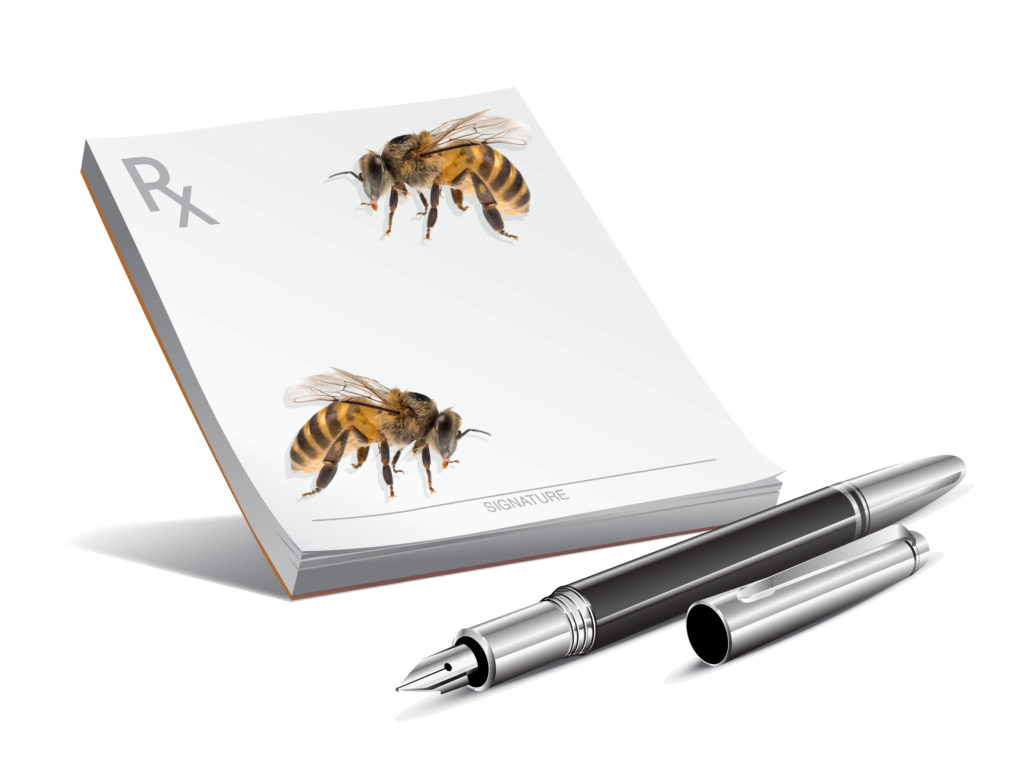Cleanroom News
Apis, Bee Venom, and Cleanrooms – the New ABCs of Cancer Treatment
Heard the Buzz?
When we think of the work performed in cleanrooms we often envision the drama and romance of large-scale projects. The ‘blue sky’ research and engineering that may, one day, take us to Mars or allow us to communicate seamlessly around the globe or brain-to-brain. And while these kinds of projects leave us reeling in admiration for their complexity and larger-than-life ambitions, they are certainly not the only kinds of work to emerge from a contamination-controlled environment. Research into arguably less visionary areas can also offer significant benefits – from lupini beans as the new superfood to nourish a growing world population to the use of nootropics in hacking cognitive function, sometimes investment in ‘small things’ is equally productive. And with that in mind, we’re putting the spotlight today on some research that focuses on a small creature with significant potential way beyond that of its traditional ability to produce one of the most delicious substances in the natural world.
We’re talking, of course, about Apis mellifera, commonly known as the honeybee.
Recent discussions about this particular insect have focused largely on the worrying phenomenon of Colony Collapse Disorder wherein entire hives of bees die off suddenly and apparently without reason. And despite it being of great significance given that bees are the #1 pollinators of most of our food crops, that’s not the direction we’re going in today. Furthermore, we’re not even looking at the health benefits of honey, royal jelly, or propolis – the products most commonly associated with bees. ‘What’s left?’ we hear you wonder. Well, have you heard of therapeutic bee venom? If not, read on…
On matters ‘apian’ (that is, relating to or characteristic of bees) it’s useful to start with a couple of basic definitions. According to a paper published in the US National Library of Medicine, a resource of the National Institutes of Health (NIH), ‘Apiculture is the science and art of prolonging, sustaining, and retaining health by using products obtained from honeybee hives, such as honey, bee bread, bee venom, bee pollen, propolis, and royal jelly.’(1) And then there’s apitherapy which is a form of pharmocopuncture.
Pharmoco….? Let us explain.
As Hindawi.com, an open access publisher of scholarly research, notes in Standardization of the Manufacturing Process of Bee Venom Pharmacopuncture Containing Melittin as the Active Ingredient: ’Until recently, there was no proper English word for herbal acupuncture. However, the term “pharmacopuncture” was registered in the 2017 medical academic information classification system (MeSH), which is used by the US National Library of Medicine (NLM) to link academic information in the healthcare field. Additionally, the term “pharmacopuncture” has been added to the new index of PubMed, which is the world’s largest medical journal database.’(2) But what is it and who espouses this technique?
Let’s start at one end of the spectrum and work our way to the other. Firstly: Goop. Remember that company from our ‘fruitloopery’ article published around this date in 2018? Launched by actor Gwyneth Paltrow, Goop is a lifestyle brand that, as we originally noted, ‘markets and sells a variety of devices and supplements that have, increasingly, tended towards the outer fringes of science.’(3) These have included astrology-informed sound healing, orgasmic meditation, and the hangover ‘cure’ venik, a Russian technique that involves being lashed with birch branches, and Goop’s articles certainly make interesting reading. Founder Paltrow has also entered the discussion around apitherapy, claiming in an interview with Bee Shapiro (surely a case of ‘nominative determinism,’ if we ever saw one!) of The New York Times that she has ‘been stung by bees. It’s a thousands of years old treatment called apitherapy. People use it to get rid of inflammation and scarring. It’s actually pretty incredible if you research it. But, man, it’s painful.’(4)
While we are not sure which condition Paltrow was aiming to cure, others who espouse bee venom therapy have pointed to the substance’s alleged effect on arthritis and multiple sclerosis. Upon introduction to the body, the venom stimulates an anti-inflammatory response by the immune system which is alleged to assist in such autoimmune diseases. However, according to an article published by the BBC, the Multiple Sclerosis Trust in the UK doubts the effectiveness of bee venom as a treatment: ‘But [the Trust] says “there is no research to show it is an effective treatment for people with MS”. They said a 2008 review of non-conventional approaches to treating MS found that there was only marginal evidence for bee-venom therapy.’(5)
The MS Trust, however, was pointing to a review from 2008 and more recently a couple of articles have appeared that perhaps overturn these findings. Just this month a paper published by Nature detailed very different research results. Noting that ‘[d]espite decades of study, the molecular mechanisms and selectivity of the biomolecular components of honeybee (Apis mellifera) venom as anticancer agents remain largely unknown,’ lead author Ciara Duffy and her team published Honeybee venom and melittin suppress growth factor receptor activation in HER2-enriched and triple-negative breast cancer.(6) As the title suggests, specific forms of cancer were targeted for treatment and the results seem to have some potential. Let’s take a closer look.
According to Duffy et al, ‘[b]oth honeybee venom and melittin have demonstrated antitumoral effects in melanoma, non-small-cell lung cancer, glioblastoma, leukemia, ovarian, cervical, and pancreatic cancers, with higher cytotoxic potency in cancer cells compared to nontransformed cells.’(7) In addition, the researchers noted that melittin worked to actively suppress liver metastasis and that ‘synergistic anticancer effects have been reported between honeybee venom and other therapeutic modalities, including […] with docetaxel in lung cancer cells.’(8)
All of which, on the face of it, looks like a path worth pursuing.
But what is the active component of bee venom and why does it look so promising in therapeutic terms? Accounting for around 52% of the dry mass of bee venom, melittin is a ‘positively charged, amphipathic 26-amino acid peptide [that is able to] target cancer cells by shutting down the activity of molecules overexposed in these cancers.’(9) Peptides, as you’ll recall, are natural biological molecules that are found in all cells of the body. As short chains of amino acids, they are essentially the building blocks of proteins like keratin and collagen and can also act as hormones, such as in the regulation of blood sugar. In the abovementioned article in Nature, the authors suggest that ‘majority of the antineoplastic activity of honeybee venom has been attributed to melittin through inhibition of the PI3K/Akt/mTOR axis in breast cancer, MAPK in melanoma, JAK2/STAT3 in ovarian cancer, and NFκB signaling pathways in lung carcinoma cells.’(10) For the complete paper, click here.
So how is this bee venom obtained?
According to an article published in Hindawi, Standardization of the Manufacturing Process of Bee Venom Pharmacopuncture Containing Melittin as the Active Ingredient, ‘there are no standardized methods for preparing the herbal medicines used in pharmacopuncture, and it is not clear whether the active ingredients are safe and stable. Several studies have investigated nonstandardized preparation processes, but few investigations have addressed safety and preparation methods.’(11) And from a contamination control and public safety perspective this is problematic. Seeking to standardize a refinement process, lead author Yoonmi Lee and team, used purchased crude bee venom and in a cleanroom environment subjected it to high-performance liquid chromatography (HPLC), deriving solvents for extraction, partition, and thin-layer chromatography (TLC). Given that melittin is heat sensitive, ethanol was during the purification process to obtain a 10% diluted sample which was then fractionated and filtered. Thereafter, allergens were removed, the purified melittin was passed through membrane filters, and the isolation and purity of the separated materials was verified. Although the details of the entire standardization and purification process are outside of the scope of this article, for those whose interest has been piqued the full step-by-step breakdown can be found here.
So while we have at least one protocol for the laboratory purification of bee venom, can we be sure that the substance is actually safe?
Ultimately, that is a complicated question and the literature suggests that it really depends on which researchers are asked. According to reports published in the Journal of Investigational Allergology and Clinical Immunology, for instance, a 55-year old female collapsed and ultimately died after receiving an apitherapy treatment in Spain. Undergoing the live bee sting therapy on a monthly basis for 24 months as a way to improve muscular contractions, she had neither risk factors nor co-occurring conditions, and exhibited a good record of tolerance. On one occasion, however, ‘she developed wheezing, dyspnea, and sudden loss of consciousness immediately after a live bee sting. […] The apitherapy clinic personnel administered methylprednisolone. […Her] systolic pressure had dropped to 42 mmHg and her heart rate had increased to 110 bpm. Oxygen saturation was not reported. Treatment [also] consisted of a double dose of adrenaline (0.5 mg each), saline infusion, intravenous corticosteroids, and antihistamines.’(12) Ultimately, despite hospitalization, ‘[t]he patient died some weeks later of multiorgan failure. Persistent hypotension during severe anaphylaxis had caused a massive watershed stroke and permanent coma with multiorgan impairment.’(13) According to the journal report, ‘this is the first reported case of death by bee venom apitherapy due to complications of severe anaphylaxis in a confirmed sensitized patient who was previously tolerant.’(14) The article concludes that ‘[p]revious tolerance to bee stings does not prevent hypersensitivity reaction; however, repeated exposure favors a higher risk of sensitization.’(15) In other words, a previous lack of sensitivity to the treatment does not preclude future negative reactions.
This last point can be equally true of other kinds of allergic responses that risk anaphylaxis and doesn’t take into account the possibility of contamination.
In theory, it is not impossible that a contaminated batch of the product may have been at the root of the issue, given the patient’s earlier good tolerance. Moreover, we cannot know the extent to which the practitioner, manufacturer, and suppliers of raw materials conformed to Hazard Analysis and Critical Control Points (HACCVP) protocols, cGMPs, supply chain analysis, and other safeguards in ensuring the purity of the product. While acknowledging that the patient had a long history of safe treatment, the potential for small changes or oversights of course exists. And sometimes their potential risks outweigh their anticipated benefits.
Outside of the controversy regarding the safety and effectiveness of bee venom therapy is one more consideration: is it ethical? As far back as 2006, the United States Environmental Protection Agency (EPA) acknowledged the phenomenon of Colony Collapse Disorder which poses a clear and present danger to the global bee population. Even as those concerned by rising numbers of bee colony deaths work to protect the insects, others with fiscal incentives to exploit them are finding a niche market. According to Beenigma, an enterprise based in new Zealand which is famous for its Manuka honey, ‘One gram of the bee venom […] is the equivalent of 10,000 bee stings and costs about $304, more than eight times the current value of gold.’(16) And this is problematic for one very clear reason: in delivering the sting, the bee dies; 10,000 individual creatures die for just 1 gram of product. Perhaps this ratio is acceptable, perhaps it is not. We remain to be convinced.
However, the final word in the Biopharma-Reporter article does point to a more api-friendly potential alternative: scorpion venom: ‘Earlier this year, City of Hope scientists published research on the use of chlorotoxin (CLTX), a component of scorpion venom, with brain tumor cells. The researchers developed and tested the first chimeric antigen receptor (CAR) T cell therapy using chlorotoxin to direct T cells to target brain tumor cells.’(17) While we wait to see whether tests of this substance offer a clear path to treatment, some of our team are privately hoping that scorpion venom might turn out to be at least as effective as its apian counterpart. The daily activities of bees, after all, offer many environmental benefits to us from the pollination of economically significant crops such as almonds and apples to that of flowers, both wild and cultivated. Plus they are often regarded as an object lesson in collective endeavor, inspiring some of us to work collaboratively for the good of the whole. The same inspiration does not, we fear, arise from the observation of scorpions flitting from around one’s back yard.
Still on the fence about joining Team Bee or Team Scorpion? Just ask yourself one question: when was the last time you reached for a teaspoon of scorpion honey to stir into your cup of afternoon tea?
Fruitloopery or promising new science: what is your stance on apitherapy? Do you have direct experience of bee venom treatment? We’d love to know your thoughts!
References:
- https://www.ncbi.nlm.nih.gov/pmc/articles/PMC5549483/
- https://www.hindawi.com/journals/ecam/2018/2353280/
- https://www.nytimes.com/2016/04/07/fashion/gwyneth-paltrow-juice-beauty-goop.html
- ibid
- https://www.bbc.com/news/health-43513817
- https://www.nature.com/articles/s41698-020-00129-0
- ibid
- ibid
- https://www.biopharma-reporter.com/Article/2020/09/07/Honeybee-venom-kills-aggressive-breast-cancer-cells-study
- https://www.nature.com/articles/s41698-020-00129-0
- https://www.hindawi.com/journals/ecam/2018/2353280
- http://www.jiaci.org/revistas/vol28issue1_6-2.pdf
- ibid
- ibid
- ibid
- https://secure.beenigmacream.com/
- https://www.biopharma-reporter.com/Article/2020/09/07/Honeybee-venom-kills-aggressive-breast-cancer-cells-study






















Pingback: Apis, Bee Venom, and Cleanrooms – the New ABCs of Cancer Treatment - Cleanroom News | Berkshire Corporation